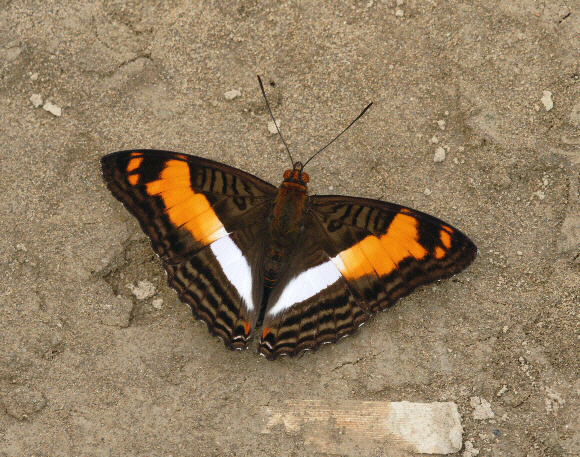
Introduction
Adelpha butterflies are colloquially known as ‘Sisters’. In terms of appearance they are reminiscent of the White Admirals (Limenitis) of Eurasia, and share with them a fondness for flitting gracefully around the lower branches of trees in the dappled sunlight of the forest.
There are 85 known species of Adelpha, all except two of which are confined to Central and South America. The butterflies are characterised by having a distinctive blackish marbled pattern overlaid on a brown ground colour; and by the presence of a broad orange or white band on the forewings. The hindwings of most species have a white median band.
While it is easy to recognise the genus, determining the individual species can sometimes be very difficult – a problem exacerbated by misidentified or mislabelled specimens in certain entomological books. The only reliable identification resource is “The genus Adelpha” by Keith Willmott. Accurate identification requires careful examination of the configuration of orange markings in the subapical area on the forewing. In most cases it is also essential to examine the patterning on the undersides, by which means otherwise similar species can be distinguished.
Adelpha messana occurs from Guatemala to Bolivia. The illustrated subspecies delphicola occurs from southern Venezuela to Bolivia.
Habitats
This species breeds in primary rainforest at altitudes between about 0-800m.
Lifecycle
I have no data specific to messana. The following generalisations apply to the genus Adelpha: The eggs of most species are white or pale green, and are laid singly on leaves of the foodplants which include Rubiaceae, Moraceae, Urticaceae, Verbenaceae, Melastomaceae, Bombacaceae, Ulmaceae, Piperaceae, Tiliaceae or Ericaceae according to species. The young larvae nibble away at the tips of leaves, leaving the midrib projecting. They construct a chain of frass along the midrib and rest at the end of it. The frass chains appear to act as a deterrent to ants, spiders and parasitoids which find it difficult to walk on them. When fully grown the larvae are cryptically coloured and resemble bird droppings, mossy twigs or bits of curled up dead leaf. They have 2 rows of conspicuous spines along their backs, those on the first two segments being enlarged and directed forward, while the third pair are directed backward. The pupae, which are suspended by the cremaster, are in some species green or brown, while others are entirely silver, and shiny. The pupae of some species are decorated with numerous spikes and projections, and sometimes have very prominent palpi.
Adult behaviour
Adelpha messana is usually seen singly, perching on sunlit foliage, or visiting fermenting guava and other fruits in light gaps in the forest. Occasionally males can be seen mud-puddling in open areas such as sandbanks and bare ground in the vicinity of forest villages.
